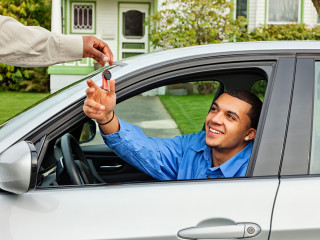Self-driving car technology is predicted to transform the way we commute, and these predictions have personal injury lawyers paying close attention. If conceivably there will be no driver behind the wheel, who would be responsible for injuries to passengers in self-driving vehicles, in the event of an accident?
In this blog we summarize seven ways some of the industry experts and insiders are predicting that self-driving cars will change car insurance, with some predictions from an injury law perspective included.
- Roads will be safer
Elon Musk the CEO of Tesla has just announced that the automakers fully driverless technology (known as the enhanced autopilot feature and available as an add on option in Tesla vehicles), will be completely driverless by the end of 2020.[1] Although autonomous vehicle crashes get a lot of media attention, it is predicted that autonomous driving features will make roads much safer and result in a transformative shift in auto insurance, particularly risk assessment. A 2015 National Highway Safety Administration Study found that over 90% of car collisions are caused by human error.[2] According to Dr. Peter Sweatman, Professor in Transport Technologies at the University of Melbourne and former director at the University of Michigan’s Transportation Research Institute, this creates a major incentive for private industry and governments to work together toward autonomous driving technology.[3]
Distracted driving, cell phone use, speeding, fatigue and drunk driving, some of the greatest risk factors involved in serious motor vehicle accidents could be eliminated altogether.[4] Sophisticated detection systems including cameras, lidar and radars will surpass human ability to foresee and avoid a collision.[5] If risk is mitigated by the auto pilot feature, premiums could foreseeably be reduced based on how often drivers engage the driverless technology while on the roads.[6]
2. There will be a decline in vehicle ownership
Volkswagen and Lyft are predicting that as driverless technology improves, car ownership will decrease.[7] Most people and government transportation initiatives will turn to driverless ride-sharing services.[8] Many large urban centers have already begun to shift policy in this direction. There are restrictions on car ownership in places like Madrid, Singapore and London.[9]
3. Risk assessment will be based on manufacturer data
David Ross Keith, an assistant professor of system dynamics at the Massachusetts Institute of Technology (MIT) predicts that insurers will begin to shift policies from drivers to manufacturers and that these policies will be based on the data already collected and maintained by manufacturers.[10] This will allow insurers to assess risk based on data across entire fleets of vehicles, without having to wait years for collision statistics to accrue.[11] In California a new seed funded company Avinew is already slated to provide insurance by tapping into manufacturer driving data.[12]
4. Fault Determination in an accident will be more technical and vehicle damage more costly
Instead of assessing the driver’s actions to determine fault, insurers will now look at the data contained in sensors and cameras in the vehicles involved in the crash which would point to a potential cause for the collision.[13] When a collision does happen, the impact on all of the various sensors in play, and their calibration could mean that what used to be a minor fender bender will cost more for repairs because of the enhanced technological features in every aspect of the vehicle.[14]
5. Claims will be against the auto makers and industries related to driverless functionality
Rodney Parker, associate professor of operations management at Indiana University predicts that liability will shift from drivers to manufacturers and autonomous software technology developers.[15] Questions surrounding the cause of an accident will focus on whether it was a hardware or software malfunction, or was it a sensor? Did the vehicle apply the protocols that are meant to address this particular situation? Did the crash avoidance technology trigger properly?
6. Insurers will offer policies to manufacturers instead of drivers
Insurers are already formulating the future of insurance by assessing how they can offer policies to manufacturers instead of drivers. The industry is also preparing to shape risk assessment by compiling reams of manufacturer data, many are expanding into data analytics while others are in talks to merge with auto makers.[16]
Car accident claims would become more similar to product liability claims. Experts who would be called at trial would have expertise in the autonomous driving and crash prevention technology of the vehicle and how it is supposed to work. One could envision that when a consumer purchases a vehicle from the manufacturer, insurance would be included, perhaps as part of vehicle subscription models already being offered by some auto makers like Toyota.[17] Perhaps the insurance provisions of your car purchase agreement would include mandatory mediation and arbitration clauses like those included by Uber in their contracts with drivers. One could also envision a streamlined no-fault schedule-based compensation regime for injuries, similar to WSIB or the Quebec no-fault system.
7. Governments will need to address the shift in stakeholder responsibilities
Governments are already grappling with the shift towards “transportation as a service” that has been brought on by Uber and Lyft and its impact on related industries. It is also predicted that policy considerations will need to be made as governments begin to grapple with the change in demands for municipal infrastructure. By example, sensors in roadways or “smart roads” and alterations to traffic rules and signals could help to support driverless technology.[18] Waymo, Google’s autonomous car division, has already released law enforcement interaction protocols for their autonomous vehicles.[19] Governments will need to look at the way these advancements can support drive clean and emission reduction initiatives, congestion and traffic problems and roadway safety. Some in the industry such as Ford are preparing fleets of autonomous vehicles that will not be privately owned but rather government operated and complimentary to public transportation initiatives.[20]
All of these developments mean that big changes are on the horizon for auto insurance and the way we think about car accident claims, the most positive one being a drastic reduction in auto collisions and auto accident related injuries and fatalities.
This blog contains predictions which may or may
not turn out to be true.
[1] https://www.wired.com/story/elon-musk-tesla-full-self-driving-2019-2020-promise/
[2] https://crashstats.nhtsa.dot.gov/Api/Public/ViewPublication/812115
[3] https://pursuit.unimelb.edu.au/articles/tackling-human-error-to-stop-vehicle-accidents
[4] https://www.bloomberg.com/news/articles/2019-02-19/autonomous-vehicles-may-one-day-kill-car-insurance-as-we-know-it
[5] Ibid.
[6] Ibid.
[7] https://business.financialpost.com/diane-francis/as-the-world-comes-up-with-new-solutions-to-attack-traffic-canada-lags-behind, see also: https://www.businessinsider.com/carpocalypse-cars-automobile-sales-data-us-europe-2019-3
[8] Ibid.
[9] Ibid.
[10] Supra, note 4.
[11] Ibid.
[12] Ibid.
[13] Ibid.
[14] Ibid.
[15] Ibid.
[16] Ibid.
[17] Supra, note 7.
[18] http://www.digitaljournal.com/pr/4189343; see also https://hbr.org/2018/08/to-make-self-driving-cars-safe-we-also-need-better-roads-and-infrastructure
[19] https://www.latimes.com/business/la-fi-self-driving-rules-20190304-story.html















